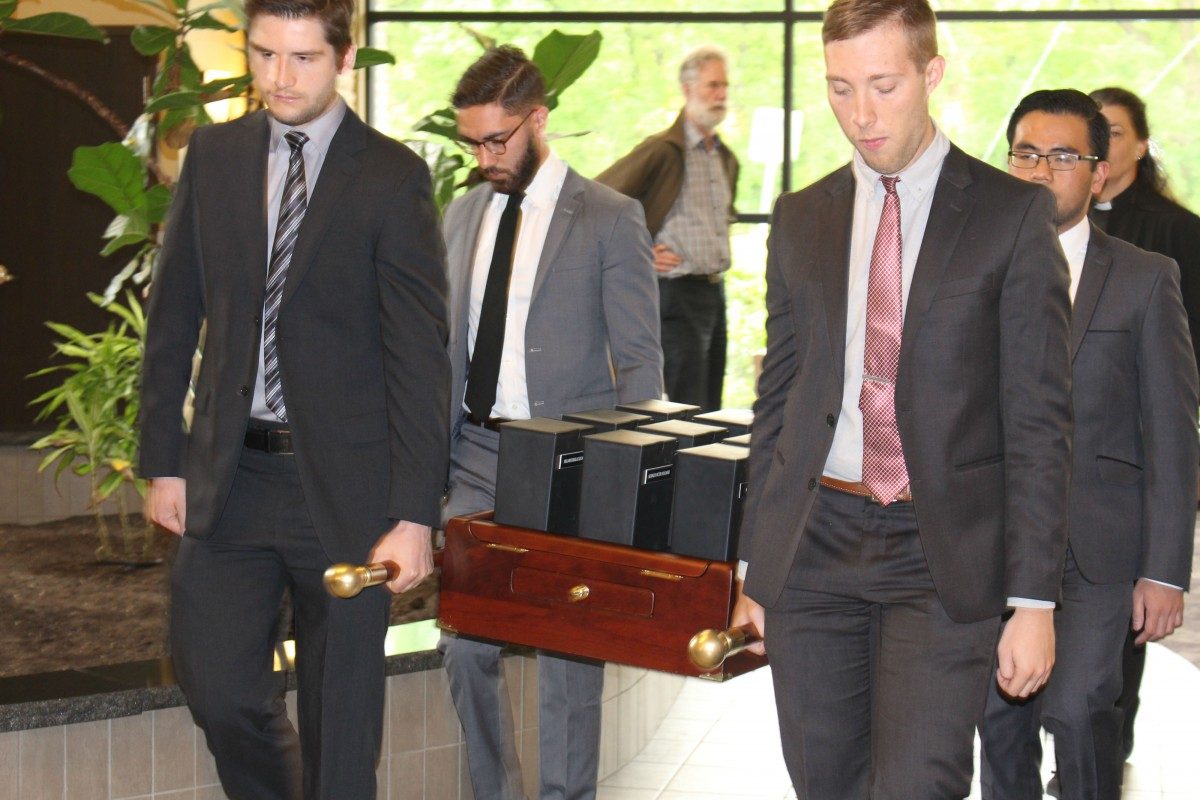
Pallbearers from the medical program transfer the ashes of the donors to the waiting hearse.
Honouring the ‘silent teachers’:
Memorial Service recognizes those who donated their bodies to science
On June 23, 2017, the University of Manitoba Rady Faculty of Health Sciences and the Department of Human Anatomy and Cell Science honoured 23 individuals who donated their bodies for anatomical studies with a memorial service.
“When I reflect on the incredible gift that was given to us by those we honour today, I cannot help but think about the decision they made to support students in the beginning of their career. How wonderful, how generous and how selfless that decision was,” said Emma Ambrose, Med I student, speaking to the assembled families, friends, students and faculty.
“To think that these individuals took the time to think about how they could best support the community and make a difference in the world, even after they passed, is truly humbling.”
As part of their studies, students in all five colleges of Rady Faculty of Health Sciences must learn about the structures, tissues and systems that make up the human body.
Dr. Thomas Klonisch, Department Head and professor in the Department of Human Anatomy and Cell Science, Max Rady College of Medicine, explains that while students also attend courses and study textbooks, there is no substitute for the real thing.
“The first time a student sees the inside of a human body is a transformative experience,” he says. “There is a very big difference between looking at an atlas and seeing the body itself.”
Because each person is unique, Klonisch says that in addition to learning about otherwise healthy individuals, donors may also have a broad spectrum of diseases and conditions, as well as medical implants.
“For example, if someone has a pacemaker, this allows us to see how it is actually situated.” While a student may have already learned about the device, seeing one and how it is connected to the structures of the body allows students to better comprehend the science behind the lectures.
Training for surgery also begins with donor bodies, says Klonisch. “We can show, this is how you have to access certain structures. This is where you do the incision, not to cut major arteries or blood vessels. It’s part of the experience.”
Without those who donated their bodies to medical research and education, Klonisch says it would be almost impossible for students to understand everything they need to know before they begin working with patients of their own. “It is a vital part of their education,” says Klonisch.
On behalf of her fellow students, Ambrose also pointed out that the lessons learned from their “silent teachers” go far beyond the clinical. “They have bestowed upon us far more than the knowledge of the physical side of medicine,” she said. “They have taught us humility and they have taught us humanity. These things cannot be taught in a lecture or from a textbook. They have given us a unique gift for which no words of gratitude can suffice.”






